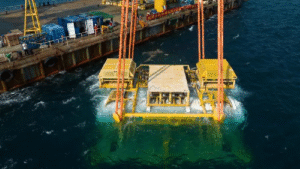In a historic collaboration that underscores the growing partnership between international space agencies, the Indian Space Research Organisation (ISRO) successfully launched what is being hailed as the world’s most expensive Earth-imaging satellite. The NASA-ISRO Synthetic Aperture Radar (NISAR) satellite lifted off from the Satish Dhawan Space Centre, marking a major milestone for global climate and disaster monitoring.
With a staggering price tag of approximately $1.5 billion, NISAR is the most expensive Earth observation mission ever undertaken. The satellite is a joint project, with ISRO providing the S-band radar, a modified I-3K spacecraft bus, and the GSLV-F16 launch vehicle, while NASA’s contribution includes the L-band radar and other essential components.
NISAR’s primary mission is to provide an unprecedented view of Earth’s land and ice surfaces. The satellite’s dual-band radar system can penetrate clouds and darkness, allowing it to collect high-resolution data day and night, in all weather conditions. This capability will be a game-changer for:
- Disaster Management: The satellite can detect subtle ground movements as small as a few millimeters, providing early warnings for events like volcanic eruptions, landslides, and earthquakes.
- Climate Change Monitoring: It will provide crucial data on the melting of polar ice, the movement of glaciers, and changes in ecosystems, helping scientists to better understand the pace and effects of climate change.
- Agricultural Planning: The high-resolution imagery will assist farmers with crop monitoring, soil moisture assessment, and drought-related issues.
The data collected by NISAR will be made publicly available, a move that will democratize access to critical information and benefit researchers and governments worldwide. The mission, with a planned life of five years, is expected to generate approximately 80 terabytes of data per day.
The successful launch is a testament to the strong scientific and technological cooperation between India and the United States, showcasing a united effort to tackle some of the world’s most pressing environmental challenges.







